- News
- Reviews
- Bikes
- Accessories
- Accessories - misc
- Computer mounts
- Bags
- Bar ends
- Bike bags & cases
- Bottle cages
- Bottles
- Cameras
- Car racks
- Child seats
- Computers
- Glasses
- GPS units
- Helmets
- Lights - front
- Lights - rear
- Lights - sets
- Locks
- Mirrors
- Mudguards
- Racks
- Pumps & CO2 inflators
- Puncture kits
- Reflectives
- Smart watches
- Stands and racks
- Trailers
- Clothing
- Components
- Bar tape & grips
- Bottom brackets
- Brake & gear cables
- Brake & STI levers
- Brake pads & spares
- Brakes
- Cassettes & freewheels
- Chains
- Chainsets & chainrings
- Derailleurs - front
- Derailleurs - rear
- Forks
- Gear levers & shifters
- Groupsets
- Handlebars & extensions
- Headsets
- Hubs
- Inner tubes
- Pedals
- Quick releases & skewers
- Saddles
- Seatposts
- Stems
- Wheels
- Tyres
- Health, fitness and nutrition
- Tools and workshop
- Miscellaneous
- Cross country mountain bikes
- Tubeless valves
- Buyers Guides
- Features
- Forum
- Recommends
- Podcast
review
£1,800.00
VERDICT:
A fast and nimble road bike that puts in an exceptional performance for its price
Weight:
8,550g
Contact:
At road.cc every product is thoroughly tested for as long as it takes to get a proper insight into how well it works. Our reviewers are experienced cyclists that we trust to be objective. While we strive to ensure that opinions expressed are backed up by facts, reviews are by their nature an informed opinion, not a definitive verdict. We don't intentionally try to break anything (except locks) but we do try to look for weak points in any design. The overall score is not just an average of the other scores: it reflects both a product's function and value – with value determined by how a product compares with items of similar spec, quality, and price.
What the road.cc scores meanGood scores are more common than bad, because fortunately good products are more common than bad.
- Exceptional
- Excellent
- Very Good
- Good
- Quite good
- Average
- Not so good
- Poor
- Bad
- Appalling
The Trek Emonda SL 5 is a lively and agile road bike with an excellent frameset and a solid component spec. It provides very good value for money.
- Pros: Fast reacting, comfortable, great ride feel
- Cons: Not aero, wheel issue on our review bike
I'm lucky enough to try out a lot of very high-end bikes (yes, it's a proper job) and riding the Emonda SL 5 makes you wonder whether there's much point spending more than £1,800. Okay, this is still a significant amount of money to spend on a bike but there are a lot of far more expensive models out there that don't provide such a rounded ride.
> Find your nearest dealer here
Most bikes at this price are good but some aren't – what's the word? – sparky. They put in a solid, dependable performance, and you might be hard pushed to point out a weakness, but they don't necessarily fire you up and get adrenaline coursing through your veins. The Emonda SL 5 does. When you're riding this bike there's no sense that 'this is good but if only...'. You just think, 'This is a great bike,' and you crack on with smashing up the next climb. It doesn't look or feel like a mid-range bike, it does a first-rate impression of a far dearer model.
Trek likes to keep it simple, stupid when it comes to navigating its road bike range. Madone: that's the aero one. Domane: that's the comfort one. Emonda: that's the lightweight one. Easy-peasy.
The Emondas are then divided up into the aluminium ALR and the S, SL and SLR carbon fibre frame platforms, getting progressively lighter and – because this is the way things generally work – more expensive.
Coming in at 8.55kg (18.8lb), the Emonda SL 5 is light but it doesn't feel like Trek has filled the tubes with helium (the frame weight is a claimed 1,091g, size 56cm). The Merlin Nitro SL (£200 more expensive at £1,999.99) that we reviewed back in the summer hit the scales at 7.7kg (17.0lb), for instance, while the Boardman SLR Endurance Disc 9.0 (also £1,999.99) we tested was 8.2kg (18.2lb).
Don't get too hung up on weight, though. I only really bring it up because Trek makes such a big deal of it when talking about the Emonda. Climb aboard the SL 5 and it immediately feels alive, responding keenly as soon as you turn the pedals. Put a serious amount of power through the cranks and it springs forward as if it was just waiting for the flag to drop. Both the head tube and the down tube are enormous, holding the frame firmly in shape when you're recruiting every muscle fibre on an out-of-the saddle sprint or climb.
Relaxed but performance-orientated
Speaking of climbing, the Emonda SL 5 is fitted with a Shimano 105 compact chainset (50/34-tooth chainrings) which, matched to an 11-28 11-speed cassette, provides enough low gears to get you up the steep stuff in relative comfort. All of the other Emonda SLs are fitted with compact chainsets too, by the way, and they all come with frames built to Trek's H2 fit. That requires an explanation and, as luck would have it, there's one coming along right now... While Trek's H1 fit puts you into a low, flat-backed, aggressive riding position, H2 is a little more relaxed, although it's still performance orientated.
I have the 58cm Emonda SL 5 here with a 57.3cm effective top tube, a 55.3cm seat tube and a 19cm head tube. The stack height is 596mm and the reach is 391mm.
With an H1 fit (the Emonda SLR Race Shop Limited frameset is available in H1) the reach is a little longer (400mm) and the stack is quite a lot lower (567mm). You all know what reach and stack are... (no? stack is the vertical and reach the horizontal measurements from the centre of the bottom bracket to the top of the head tube).
Don't get the impression that the Emonda SL 5's H2 fit will have you sitting bolt upright in the saddle because it's a long, long way from that. For comparison, a 58cm Domane SL 5 has a stack height that's 15mm higher and a reach that's 11mm shorter. In other words, the H2 fit sits somewhere in the middle, an Aristotelian golden mean. Or Goldilocks' favourite porridge, if that's a cultural reference that works better for you. Put simply, a lot of people will get on well with the fit because it requires less flex in the back and neck than a traditional race fit without binning off the idea of efficiency.
One aspect of the Emonda SL 5's ride that surprised me is the level of comfort on offer here, particularly for a performance bike with 25mm-wide tyres. Okay, you don't get a clever IsoSpeed decoupler like you'll find on a Madone or a Domane to cushion the ride, but there's a decent amount of give in the seatmast and cap that Trek provides instead of a more traditional seatpost, and in the flattened, ultra-skinny seatstays.
As we all know, saddles always come down to personal preference – what feels like an armchair to one person can feel like a razor blade to another – but the steel-railed Bontrager Montrose Comp specced here has a pressure-relief channel/hole in the centre and loads of flex in the shell so I imagine it'll make more friends than enemies.
Great groupset
The Emonda SL 5 descends with assurance, giving you the confidence to lay off the brakes when others are nervously feathering theirs. When you do need to slow down the Shimano 105 brakes work on the alloy rims to provide plenty of predictable power. Shimano does make very good brakes. These are of the direct mount variety and they can be relied upon to hold tight when you need them. They even put in a decent performance in damp conditions although, like any rim brakes, they're outperformed by disc brakes when it's properly wet. If that bothers you and you can stretch to £2,650, the Emonda SL 6 is available in a disc version – with 12mm thru-axles front and rear, a Shimano Ultegra groupset including flat mount hydraulic discs, and an 11-32t cassette.
As well as the brakes, the SL5's shifters, derailleurs, chainset, cassette and chain are all Shimano 105. We've covered this groupset a million times on road.cc and it really is difficult to fault for the money.
I particularly like the light action shifters. They're slim, comfortable and easy to operate from either the hoods or the drops. There's not a massive difference between these and more expensive Ultegra, or even top of the pile Dura-Ace mechanical shifters. Sure, you can tell them apart but in use... puh! I'd happily use 105 on every ride. It's amazingly popular and rightly so. Although a couple of others run it close, 105 is still arguably the best value groupset out there.
> Head to head: Shimano 105 vs Shimano Ultegra
> And: Shimano Tiagra vs Shimano 105
This has all been a bit of a lovefest so far, but my one tiff with the Emonda SL 5 was right at the start of our relationship. I picked up the bike and was riding home from the office on it – five miles in, whistling a happy tune, thinking about what I'd have for tea, you know the sort of thing – and the front end started to feel... odd. I got out of the saddle on a climb and it felt decidedly spongy. Weird!
I stopped to check everything and it turned out that several spokes had loosened – about eight of them, I think. And I mean that they'd really loosened to the point that the nipples were just about holding on by their fingertips (shut up! Of course they do). My multi-tool has a spoke wrench on it so I tightened them up at the side of the road, then did a proper job when I got home. Since then the wheel has been fine.
I've reviewed loads of Treks before and this hasn't been an issue in the past, so I'm happy to put it down to bad luck. To be honest, if you know which way up to hold a spoke wrench it's not a massive problem, but it would be a pain if you had to book your bike in to a shop and have a mechanic do the fettling for you. Anyway, I've forgiven the Emonda SL 5 for that now and we've both moved on.
Spoilt for choice
The Emonda range is large, kicking off with the Shimano Tiagra-equipped ALR 4 at £1,000 and going right up to the SLR 9, with Shimano Dura-Ace Di2 components, at £8,500 (a customisable Project One version of the Emonda SLR 9 is also available).
There are four SL models ranging in price from £1,500 (SL 4, Shimano Tiagra) up to £4,300 (SL 7, Shimano Ultegra Di2). At £2,000, the Emonda ALR 6, with an aluminium frame, is actually more expensive than the SL 5 courtesy of a next-level-up Shimano Ultegra groupset. The SL 5 is also available as a women's model.
Oh, and you can buy an Emonda SL frameset for £1,350 – but why would you do that when you can get a complete Emonda SL 4 for £1,500?
> Check out our guide to Trek's 2018 road bike range here
As well as the Emonda SL 6 Disc mentioned earlier, there's an Emonda SL 7 Disc, equipped with a Shimano Ultegra Di2 groupset and Bontrager Aeolus Pro 3 Tubeless Ready wheels, for £4,400.
You can certainly get complete bikes with carbon fibre frames and Shimano 105 components considerably cheaper than the Emonda SL. The Focus Izalco Race Carbon 105, for example, is £1,399 and Giant's TCR Advanced 2 is £1,449. Those two are killer value. Equally, there are plenty of carbon/105 bikes out there that are more expensive. Cervelo's R2 105 is £2,199, for example, and BMC's Teammachine SLR02 Two is £2,250.
I would say that you're getting an extraordinarily good frame with the Trek Emonda SL 5 – one that'll handle considerable upgrading if you fancy doing that gradually as and when individual components wear out. It's that which makes this bike such impressive value for money.
Overall, the Trek Emonda SL 5 is excellent. I had an early issue with one of the wheels but that doesn't detract from the fact that this is a fast and nimble road bike that reacts like something considerably more expensive. Also comfortable and well behaved, it makes you question whether it's worth spending any more money than this.
Verdict
A fast and nimble road bike that puts in an exceptional performance for its price
road.cc test report
Make and model: Trek Emonda SL 5
Size tested: 58cm
About the bike
State the frame and fork material and method of construction. List the components used to build up the bike.
Frame Ultralight 500 Series OCLV Carbon, ride-tuned performance tube optimisation, E2 tapered head tube, BB90, direct mount brakes, internal cable routing, DuoTrap S compatible, Ride Tuned seatmast
Fork Emonda carbon, E2 steerer, direct mount brakes
Wheels Bontrager Tubeless Ready
Tyres Bontrager R1 Hard-Case Lite, 700x 25c
Shifters Shimano 105, 11-speed
Front derailleur Shimano 105, braze-on
Rear derailleur Shimano 105
Chainset Shimano 105, 50/34 (compact)
Bottom bracket BB90
Cassette Shimano 105, 11-28, 11-speed
Chain Shimano 105
Brakeset Shimano 105, direct mount
Saddle Bontrager Montrose Comp, chromoly rails
Seatpost Bontrager Ride Tuned alloy seatmast cap, 10mm offset
Handlebar Bontrager Race VR-C, 31.8 mm
Handlebar tape Bontrager
Stem Bontrager Elite, 31.8 mm, 7-degree, w/computer and light mounts
Headset Integrated, cartridge bearing, sealed, 1 1/8in top, 1 1/2in bottom
Tell us what the bike is for
It's a road bike designed for racers and other performance-type riders who are interested in speed and fitness.
Frame and fork
Overall rating for frame and fork
9/10
Tell us about the build quality and finish of the frame and fork?
The quality is exceptionally good throughout.
Tell us about the materials used in the frame and fork?
The frame is made from Trek's 500 Series OCLV carbon fibre. The fork is carbon too.
Tell us about the geometry of the frame and fork?
Like all the Emonda SL frames, this bike is built to Trek's H2 geometry which sits somewhere between a low and stretched H1 fit and a more upright endurance setup. H2 is certainly performance-focused, it's just not as aggressive as H1.
How was the bike in terms of height and reach? How did it compare to other bikes of the same stated size?
It's about what you'd expect.
Riding the bike
Was the bike comfortable to ride? Tell us how you felt about the ride quality.
It's surprisingly comfortable for a bike of this type. You only get so much cushioning from 25mm tyres but the seatmast certainly helps to damp vibration and soften the blows.
Did the bike feel stiff in the right places? Did any part of the bike feel too stiff or too flexible?
The super-wide down tube holds the bottom bracket firmly in place and the tapered (1 1/8in to 1 1/2in) head tube keeps the front end in order.
How did the bike transfer power? Did it feel efficient?
It felt efficient, without a doubt.
Was there any toe-clip overlap with the front wheel? If so
Some. It's only ever an issue for tight manoeuvres at walking pace.
How would you describe the steering? Was it lively Lively.
Tell us some more about the handling. How did the bike feel overall? Did it do particular things well or badly?
It offers a great ride whether you're going uphill, downhill or on the flat. It's a well-balanced bike that feels like it can cope with pretty much anything.
Which components had the most effect (good or bad) on the bike's comfort? would you recommend any changes?
The seatmast and seatmast cap take some of the credit here, along with Bontrager's saddle.
You can swap to 28mm wide tyres if you want to run lower pressures for more comfort.
Rate the bike for efficiency of power transfer:
9/10
Rate the bike for acceleration:
8/10
Rate the bike for sprinting:
8/10
Rate the bike for high speed stability:
8/10
Rate the bike for cruising speed stability:
8/10
Rate the bike for low speed stability:
8/10
Rate the bike for flat cornering:
9/10
Rate the bike for cornering on descents:
9/10
Rate the bike for climbing:
8/10
The drivetrain
Rate the drivetrain for performance:
9/10
Rate the drivetrain for durability:
9/10
Rate the drivetrain for weight:
8/10
Rate the drivetrain for value:
9/10
Wheels and tyres
Rate the wheels for performance:
7/10
I have to take into account that several spokes came loose almost immediately. The rims are tubeless ready, if you want to go down that route.
Rate the wheels for durability:
7/10
After an initial scare they were fine.
Rate the wheels for weight:
8/10
Rate the wheels for comfort:
8/10
Rate the wheels for value:
8/10
Rate the tyres for performance:
8/10
Rate the tyres for durability:
8/10
Rate the tyres for weight:
8/10
Rate the tyres for comfort:
8/10
Rate the tyres for value:
8/10
Controls
Rate the controls for performance:
9/10
Rate the controls for durability:
8/10
Rate the controls for weight:
8/10
Rate the controls for comfort:
9/10
Rate the controls for value:
9/10
Anything else you want to say about the componentry? Comment on any other components (good or bad)
The Shimano 105 groupset put in an excellent performance.
Your summary
Did you enjoy riding the bike? Yes
Would you consider buying the bike? Yes
Would you recommend the bike to a friend? Yes
Rate the bike overall for performance:
9/10
Rate the bike overall for value:
9/10
Use this box to explain your overall score
The Trek Emonda SL 5 puts in a really strong performance. You'd be hard-pressed to tell from riding it alone that this wasn't a considerably more expensive bike. You're getting an exceptionally good bike for the money, and that equates to a 9.
About the tester
Age: 43
I've been riding for: Over 20 years I ride: Most days I would class myself as: Expert
I regularly do the following types of riding: commuting, club rides, sportives, general fitness riding
Mat has been in cycling media since 1996, on titles including BikeRadar, Total Bike, Total Mountain Bike, What Mountain Bike and Mountain Biking UK, and he has been editor of 220 Triathlon and Cycling Plus. Mat has been road.cc technical editor for over a decade, testing bikes, fettling the latest kit, and trying out the most up-to-the-minute clothing. He has won his category in Ironman UK 70.3 and finished on the podium in both marathons he has run. Mat is a Cambridge graduate who did a post-grad in magazine journalism, and he is a winner of the Cycling Media Award for Specialist Online Writer. Now over 50, he's riding road and gravel bikes most days for fun and fitness rather than training for competitions.
Latest Comments
- BigSigh 7 hours 11 min ago
I am absolutely certain that it's not fair for trans-identifying males who went through male puberty to compete in female sports... and that should...
- thax1 7 hours 15 min ago
I was just excited to learn that Grundig were still a going concern, let alone making stuff for bikes now! What's next, Blaupunkt power meters?!
- chrisonabike 8 hours 26 min ago
Nothing to do with cycling, and currently unclear as to what exactly happened. But a child is dead, a tram line isn't running services and ...
- Destroyer666 7 hours 39 min ago
Sidelining the point here a little bit, but I was just looking at a Rapha video about Lachlan Morton's latest incredible venture of riding 648km in...
- wtjs 11 hours 17 min ago
Or, you can just look at them - it's pretty obvious when they're not going to work with a new chain. Then you can try them with old lengthened...
- NeilC575 11 hours 20 min ago
I bought 5 screw in storage hooks from local d.i.y store for £10. Does the same job 🤷♂️
- Bungle_52 15 hours 4 min ago
Well it looks like they've got a page now. It says they'll accept video evidence but I haven't been through the whole process. Looks very similar...
- eburtthebike 15 hours 14 min ago
Sorry, but the BBC is definitely tilting towards cycling after the Panorama debacle....
- mdavidford 15 hours 19 min ago
Unlikely. Not once he hears that it'll 'help Gore'.


































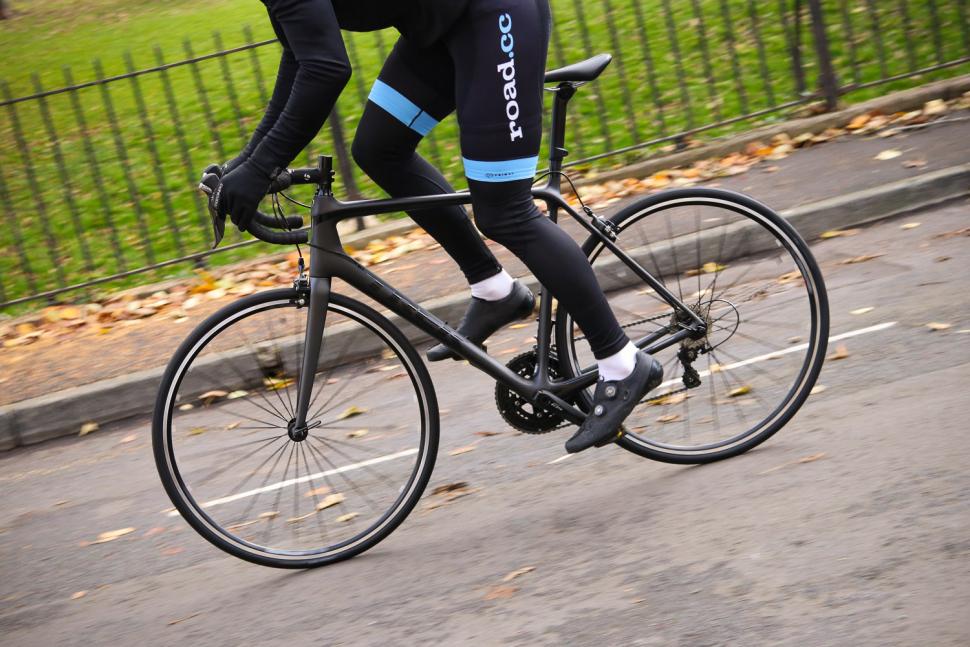
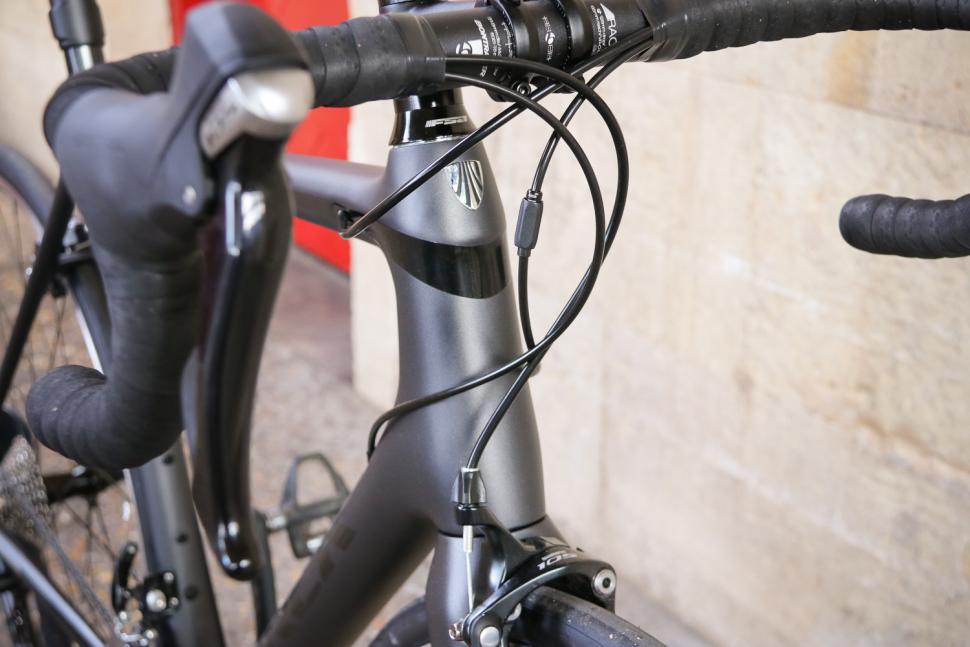
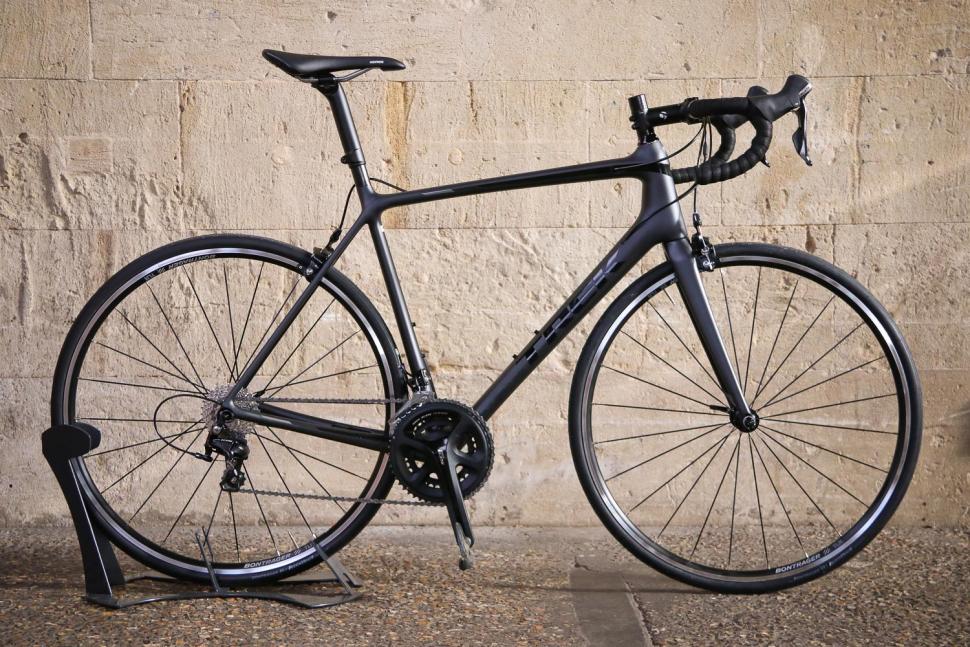
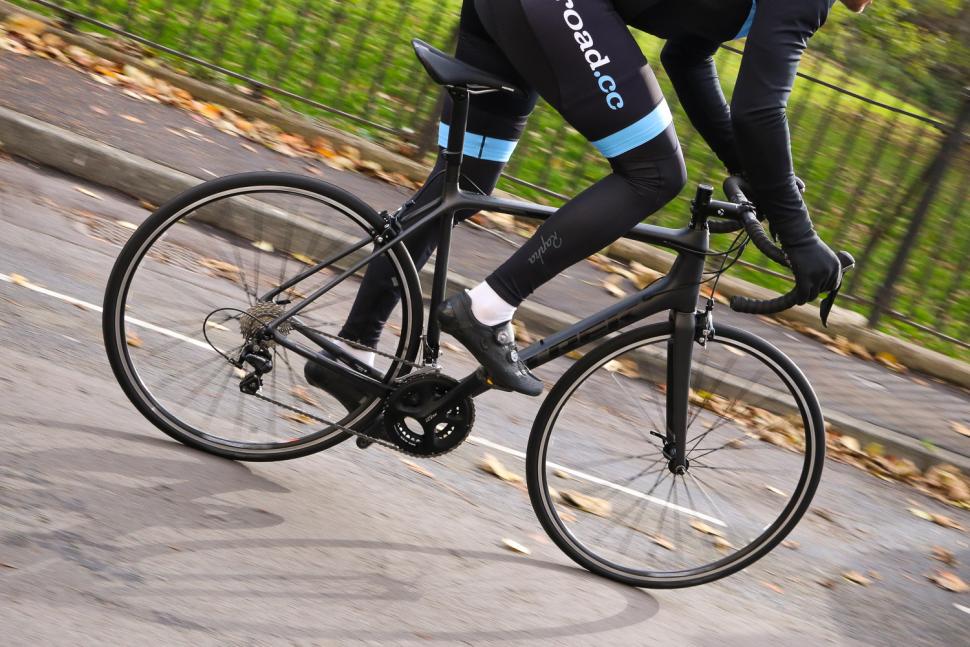

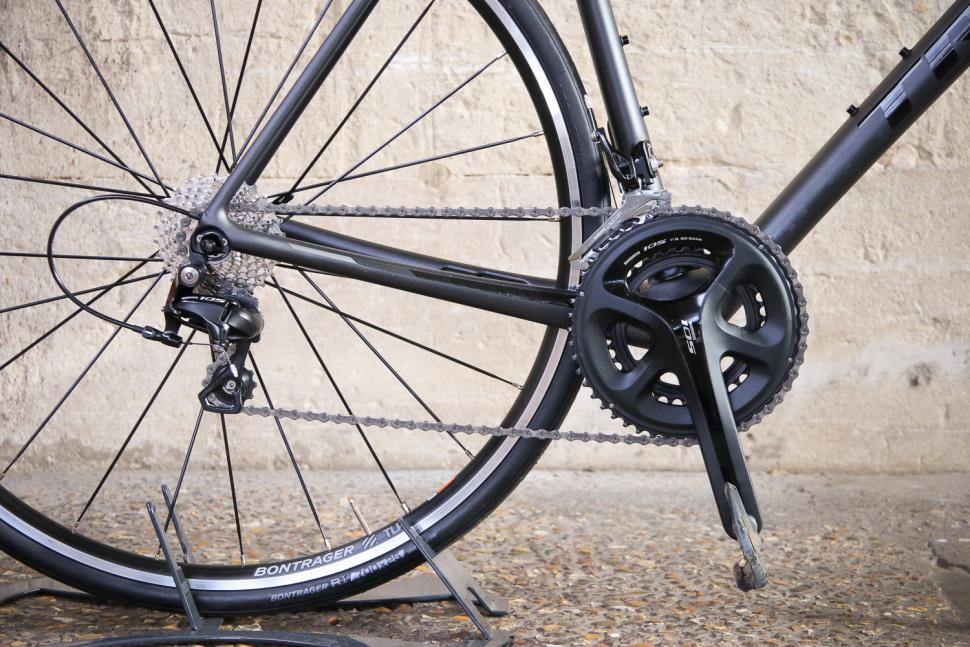

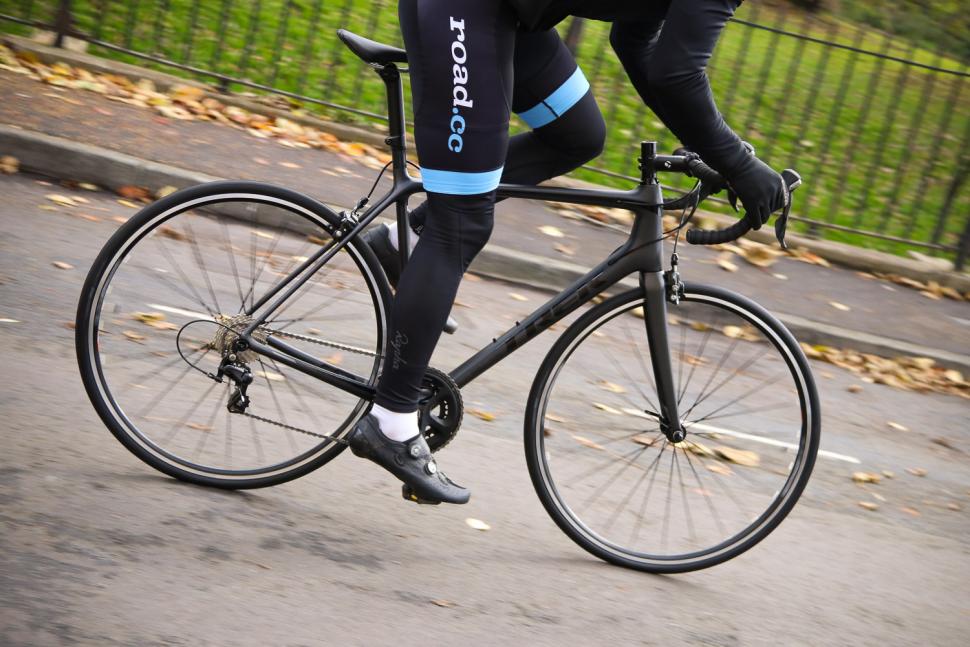
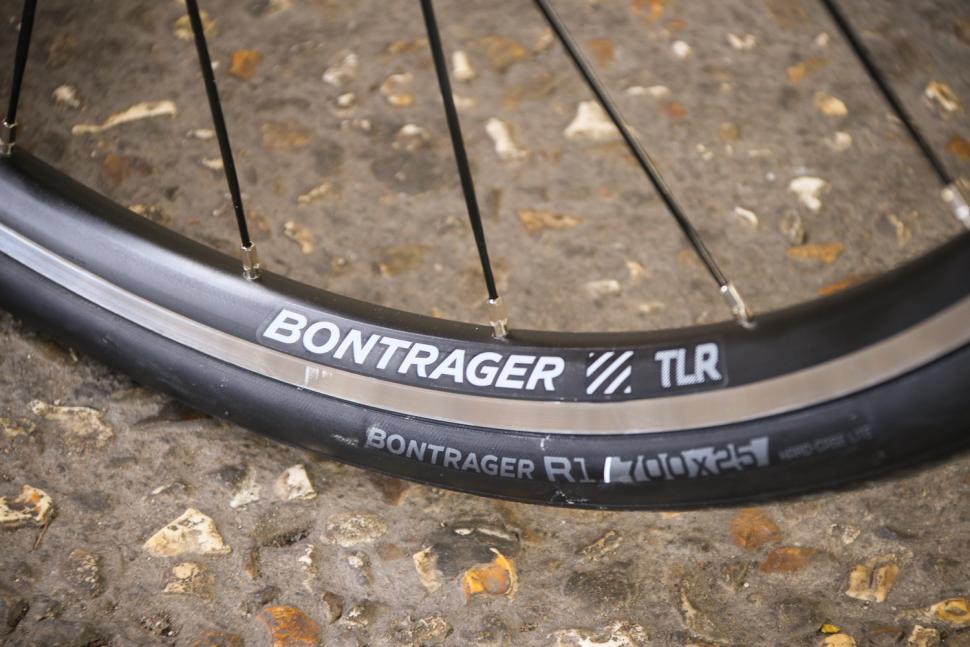

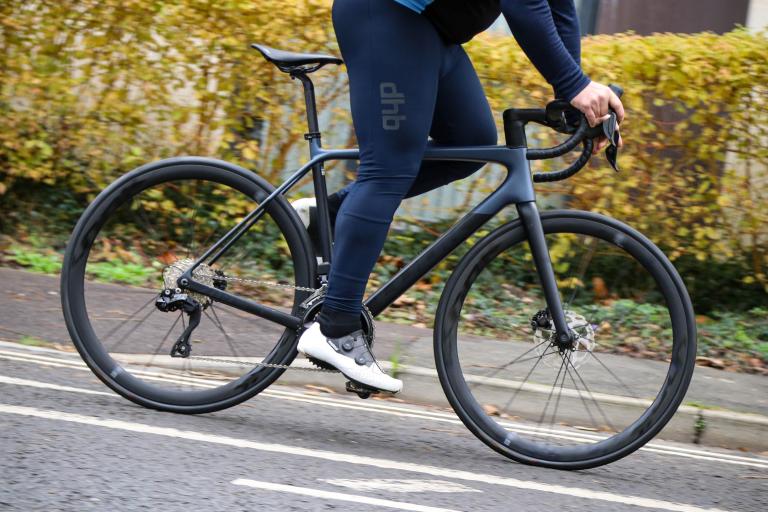
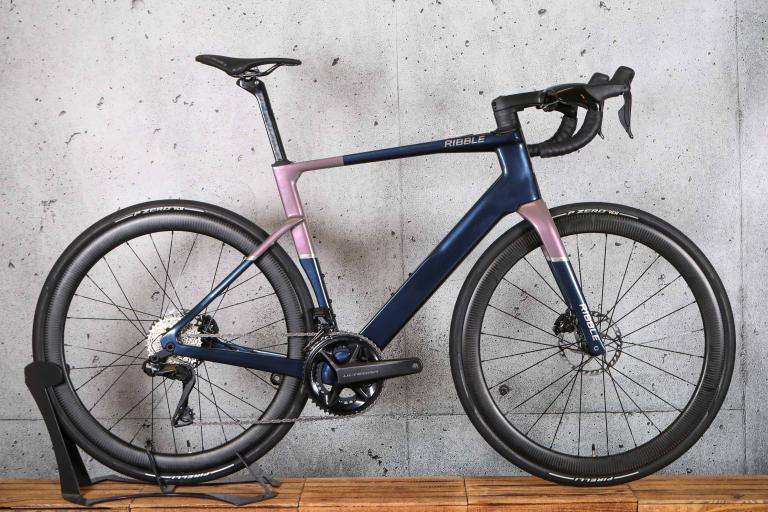
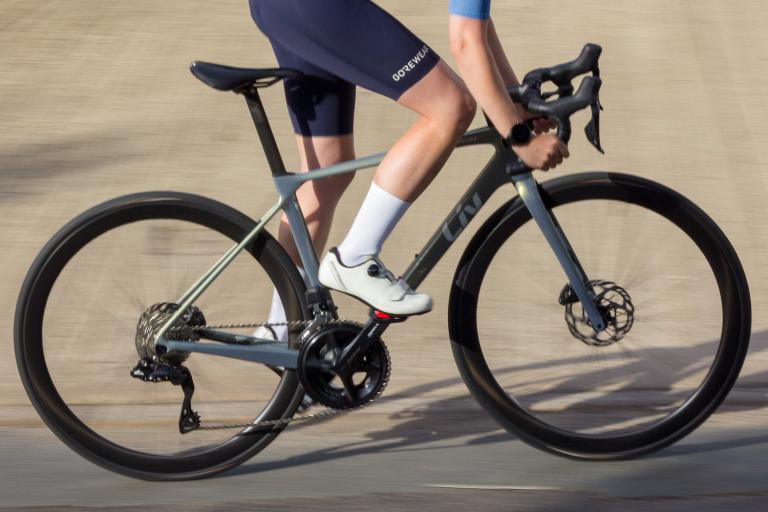
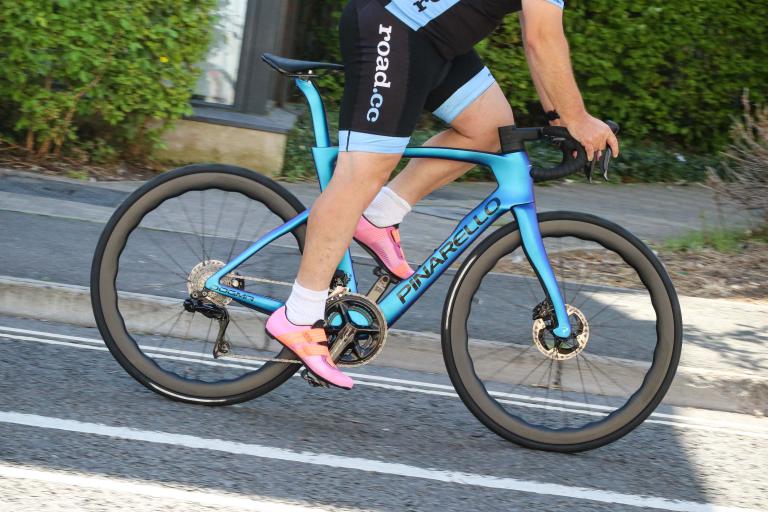
Add new comment
16 comments
I share similar thoughts on Emonda SL 5. Bought new in 2019 as 2018 model for only 1.200 € and it seemed like a great deal. But wheels almost fell appart after 30 km, most of the spokes were totaly loosened. I was lucky to find that out just before the fast descent. Both wheels, front and rear! I took it to dealer and they said I was just unlucky, one in a million. Then I waited more than 2 months for new pair of wheels, replaced under guarantee. Got Bontrager Affinity TLR wheels. They were fine but bearings seem to be totaly destroyed after about 7000 km. So I did upgrade to Mavic Cosmic.
What do I think about the bike now? It is a great bike, with perfect geometry for me, very responsive and good for climbing. Not super light but good enough. Not aero at all but new wheels are doing the job much much better. It's a climber not a TT bike. Would I recommend the bike to anybody? Probably not, due to the serious issue with wheels that could affect safety.
I still cannot understand how can a company like Trek put so awfull wheels on a nice carbon bike like Emonda 5. In my eyes this was a recall situation and obviously not a one in a million case.
I might be corrected but up to last year or perhaps this, the model was fitted with lighter 'Race' wheels. They kept the price at £1800 and put cheaper wheels on it. It's a shame as the frame and groupset is excellent, in my opinion.
"Coming in at 8.55kg (18.8lb), the Emonda SL 5 is light...
Don't get too hung up on weight, though. I only really bring it up because Trek makes such a big deal of it when talking about the Emonda".
How does a carbon bike which sells for £1800 and weighs over eight and a half kilos get described as LIGHT ?
For comparison at £1800: the Canyon Endurace CF8.0 is size Medium is 7.2 kilos.
The £1800 Rose GF Team 4 Ultegra is 7.1 kilos.
Both bikes have a complete Ultegra groupset - no sneaky substitutions, both have excellent DT Swiss wheels and are well equipped right down to Conti's top tyres.
What they seem to lack (apart from a kilo and a half) is the word Trek written down the side.
If the original article was from 2014 when the SL5 was launched, then 8.55 Kg would have been viewed as somewhat light for a fast endurance bike back then.
"If the original article was from 2014 when the SL5 was launched, then 8.55 Kg would have been viewed as somewhat light for a fast endurance bike back then".
All true, although the article is bylined:
by Mat Brett May 25 2018
and a quick check of the Evans website suggests the bike is still nearly eight and a half kilos.
Unlike the German bikes this bike does come with boat anchors for wheels and wire bead tyres. Along with the 105 groupset that would explain most of the weight difference.
The review suggests though that the frame is fantatsic so a wheel + tyre upgrade would leave you wth a fantastic bike. Sure it would cost more than the German bikes but there's more to a bike than just it's weight.
European reviews of the Rose & UK and European reviews of the Canyon suggest the frames on both those bikes are excellent too. So the question is: do you want a lightweight bike with an excellent frame, a complete Ultegra groupset, highly regarded DT Swiss wheels and top drawer finishing kit... or do you want the Trek.
Or you could take the view that a bike is more than just a frame, a groupset, wheels, tyres and finishing kit in which case the big American brands with their overweight, under specced and overpriced offerings are for you.
"Updated May 25th 2018". It was a recycled article, hence my comment......
Why is this bike being compared to the Boardman SLR Endurance Disc 9.0? The calliper version comes in at 7.6kg and gives you an almost complete Dura-Ace groupset and a better wheelset for only £99 more. https://www.boardmanbikes.com/gb_en/products/242-slr-9.2-endurance.html
Did a few hundred KMs on a rented SL5 in Mallorca earlier this year.
Nice machine, although the most impressive element was the 105 groupset (especially the brakes), which is easy to find on other makes/models.
It was definitely comfortable, and reasonably light - although I couldn't say I noticed a huge improvement on my 725-framed Equilibrium. May be my own frame which means a couple of KG off the bike doesn't make much obvious difference, of course...
So certainly not a bad option but I'd be tempted to look around a bit more before splashing that sort of cash.
Decent / good frame with full 105, own brand everything else (bars, stem, seatpost, wheels, tyres, may be ok stuff) inc wheels which look very spokey.
For £1,800
giant tcr advanced pro 2 would be a potentially better bike
in a sale at £1800 it has giant tcr frame (one of stiffest on market) giant slr carbon wheels and 105.
beaut bike would reccomend.
Its weight is also 7kg
Well that's very reassuring.
Incredibly generous considering the wheel supplied was in a dangerous condition.
An ordinary person may not have noticed the odd feeling and ridden it until it collapsed under them, throwing them under a car. It’s pretty serious.
Well that really depends, for most people that would have been picked up by the shop you purchased the bike from. For everyone who orders it direct I would expect them to check the wheel before riding it
Really? They'd notice the wheel not fitting between the brake pads a long time before collapsing.